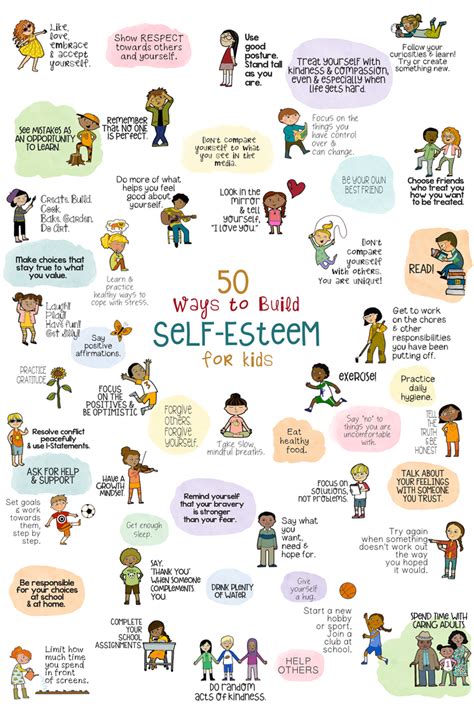Empowering Children Through Yoga: Building Confidence, Resilience, and Self-Esteem
Yoga has become a popular activity among children in recent years, not only for its physical benefits but for its remarkable ability to nurture emotional and mental well-being. One of the most profound impacts of yoga on children is its role in building confidence. This article explores how yoga helps kids develop self-assurance, resilience, and a positive sense of self. We will delve into the key concepts of yoga, historical context, its current relevance, practical applications, case studies, and implementation strategies for parents, teachers, and educators.
Key Concepts in Yoga for Children
Yoga is an ancient practice that unites the body, mind, and spirit. For children, it serves as a means to explore their physical capabilities and emotional worlds. The practice emphasizes self-awareness, emotional regulation, and mindfulness, all of which contribute to a child’s sense of confidence. Unlike competitive sports, yoga encourages kids to focus on individual progress without comparison to others, fostering an internal sense of achievement.
- Mind-Body Connection: Through various postures (asanas), children develop an understanding of how their physical movements are linked to their emotional and mental states.
- Mindfulness: Yoga teaches kids to be present in the moment, helping them manage anxiety, stress, and uncertainty.
- Emotional Regulation: By learning breath control (pranayama) and meditation techniques, children can better manage their emotions and reactions.
Historical Context of Yoga in Children’s Development
Yoga originated over 5,000 years ago in ancient India as a holistic practice aimed at achieving balance and harmony. Traditionally, it was viewed as a path to spiritual enlightenment, but it has since evolved to include physical, mental, and emotional well-being. In the 20th century, as yoga became more popular in the West, its benefits for children started being recognized.
By the 1970s, pioneering educators such as Sri Swami Satchidananda and Indra Devi began integrating yoga into school systems, emphasizing how yoga could enhance children’s learning environments. These early efforts laid the groundwork for the current integration of yoga into classrooms, therapy sessions, and extracurricular activities.
Current State Analysis: The Role of Yoga in Building Confidence
Today, yoga is widely embraced in schools, homes, and community centers as a tool to build confidence in children. Research studies indicate that children who practice yoga experience an increase in self-esteem and body image satisfaction. These children are more likely to exhibit resilience when faced with challenges, both in and outside the classroom.
| Key Benefits of Yoga for Children’s Confidence | Examples from Practice |
|---|---|
| Increased Body Awareness | Children learn to understand and respect their body’s capabilities and limitations through poses like the Warrior or Tree pose. |
| Stress and Anxiety Reduction | Through breathing exercises such as the “Balloon Breath” or “Bee Breath,” kids learn to calm themselves in stressful situations. |
| Improved Focus and Concentration | Poses that require balance, such as the Eagle Pose, help kids stay focused and improve their concentration. |
| Non-competitive Environment | Yoga allows children to develop at their own pace without pressure, unlike competitive sports, which helps avoid feelings of inadequacy. |
Practical Applications of Yoga for Building Confidence in Children
Yoga is accessible to all children regardless of their physical or mental abilities. For parents and educators, incorporating yoga into children’s routines can be simple yet profoundly effective. Here are some practical applications:
- At Home: Families can integrate yoga into their daily routines by practicing simple poses together in the morning or before bedtime.
- In Schools: Teachers can offer short yoga sessions during breaks to help students refocus and regain energy.
- In Therapy: Yoga is increasingly being used in therapeutic settings to help children with emotional regulation issues, ADHD, or autism build self-confidence.
Case Studies: Yoga’s Impact on Children
Below are several examples of how yoga has positively influenced children’s confidence:
| Case Study | Yoga’s Role | Outcomes |
|---|---|---|
| Elementary School Integration | A school in California introduced a yoga program to help children manage stress and improve focus. | Within six months, students exhibited better emotional control and higher self-esteem scores. |
| Yoga in Special Needs Education | In a special education setting, yoga was used to help children with autism and ADHD become more aware of their bodies and emotions. | Children who participated showed significant improvements in self-confidence and emotional regulation. |
| Family Yoga Workshops | A community center began offering family yoga workshops to strengthen family bonds and build confidence in children. | Children reported feeling more supported and confident after practicing yoga with their parents. |
Stakeholder Analysis: Parents, Educators, and Therapists
To effectively implement yoga in children’s lives, various stakeholders play pivotal roles:
- Parents: Can support their child’s emotional growth by practicing yoga with them at home, modeling resilience and mindfulness.
- Educators: Play a role in integrating yoga into the classroom, using it as a tool to help students develop focus and confidence.
- Therapists: Employ yoga in therapeutic settings to help children with developmental challenges build self-awareness and confidence.
Implementation Guidelines for Parents and Educators
Implementing yoga in a child’s routine requires careful consideration of their age, ability, and interest. Here are guidelines for various settings:
- Start Small: Begin with short sessions (5-10 minutes) and gradually increase duration as the child’s interest grows.
- Keep It Fun: Use animal-themed poses or storytelling to engage younger children in yoga practice.
- Consistency Is Key: Practice regularly for the best results. Incorporate yoga into daily routines for long-lasting confidence benefits.
- Use Positive Reinforcement: Encourage and praise children for their effort, rather than focusing on perfection.
Ethical Considerations in Teaching Yoga to Children
While yoga offers many benefits, it’s important to approach it with mindfulness, especially when working with children:
- Consent and Comfort: Always ensure that children feel comfortable and are not forced into poses they are not ready for.
- Cultural Sensitivity: Be mindful of yoga’s cultural roots and avoid appropriating the practice in ways that might be insensitive.
- Body Positivity: Reinforce body positivity by celebrating each child’s unique physical abilities, avoiding any comparisons.
Limitations and Future Research
Although there is considerable evidence supporting the positive effects of yoga on children’s confidence, several limitations exist. For example, the majority of studies focus on short-term outcomes rather than long-term impact. Additionally, more research is needed to understand how yoga interacts with different personality types and learning styles. Future research should explore these areas and investigate the use of technology in enhancing yoga practices for children, such as virtual yoga classes.
Expert Commentary: The Future of Yoga in Child Development
Experts in child development agree that yoga has a promising future as a tool for fostering confidence and resilience in children. As yoga becomes more mainstream, it will likely be integrated into more school curriculums, therapeutic interventions, and family routines. The holistic benefits of yoga make it a powerful practice for children, promoting not only physical health but also emotional stability and self-assurance.
Yoga’s ability to help children build confidence through mindfulness, self-awareness, and emotional regulation ensures that it will remain an essential tool for developing future generations.








